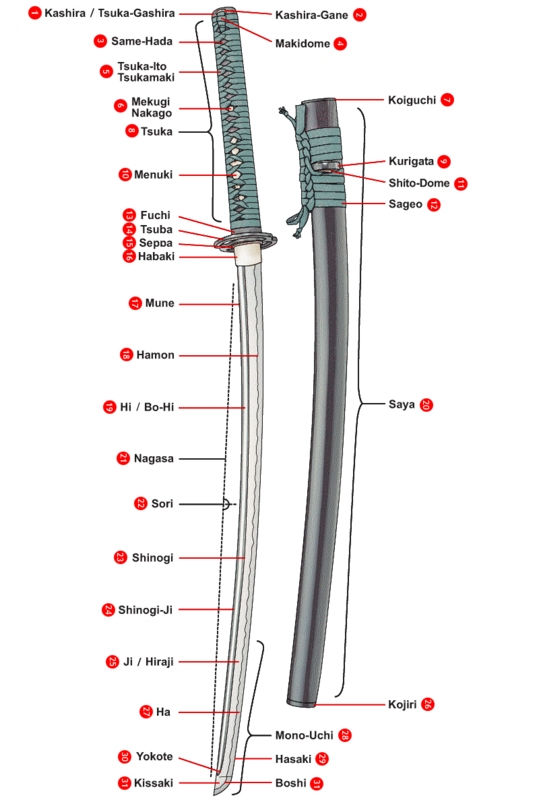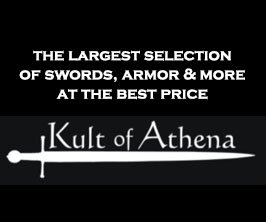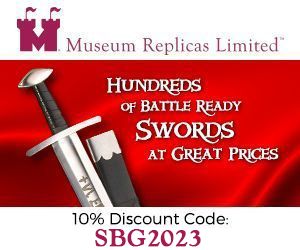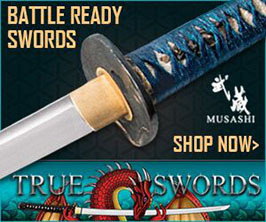Recent Articles
-
Sword Buyers Digest November Edition Out Now
Nov 01, 24 01:49 AM
A Tale of Two Ronin
Models #002 and #004
FULL DISCLOSURE: Until late October 2024, SBG used to stock Ronin Katana swords ourselves, however our companies officially parted ways with this company as explained on this post from our store blog.. The issues do not related to the products themselves, but rather to a disagreement on business practices and standards and changes no facts about the original review, only that we don't sell them anymore..
I've made it no secret that I am deeply impressed by the Ronin Katana Dojo Pro Series. And am even more impressed that swords like these are available for under $300.
The sword market has come a long way since it's early beginnings - and here is the proof, in steel!
But you need not take my word on it. Because when another true legend of the sub US$300 reviewing community checks them out first hand and finds the same incredible performance, durability and value for money - I think you'd agree that they are worth a closer look...
Ronin Katana Dojo Pro Models #002 and #004
Review by Marc Kaden Ridgeway, Atlanta Georgia, UNITED STATES
|
Steel Weight Point of Balance
Price Range |
1060 Carbon Steel 2lbs 10oz 5" from tsuba US$294-344 |
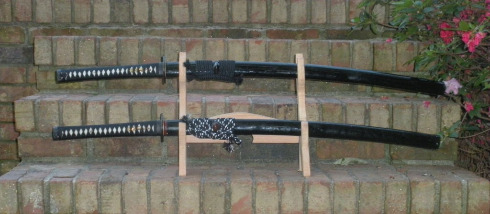
This is not a first impression review.
I have had these swords for months and cut a lot with them. I have thrust at plywood and tires, cut bamboo and bottles, and let my 13 year old son do the same. This was truly a destructive test... thing is, we didn't manage to destroy them through heavy use and moderate abuse... and I wasn't going to do it intentionally.
It should be noted that all photos were taken after 3 months of hard use...
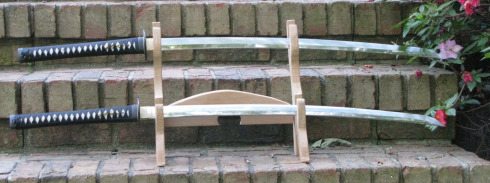
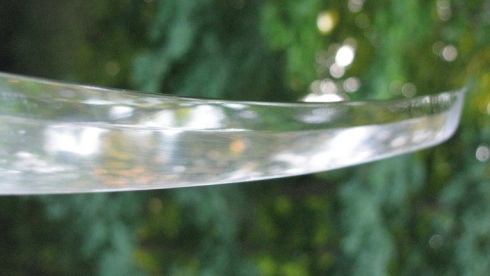
Specifications:
|
Model #002 Kochou (Butterfly Tsuba)
Nagasa: 27 inches
|
Model#005 Satori (Sukashi Tsuba)
Nagasa: 27 inches
|
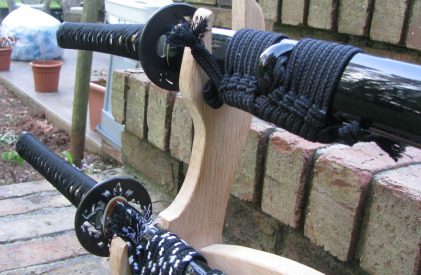
Aesthetics: Fit And Finish
I will speak first of the common elements shared by the two models, then elaborate on the couple of differences (click the reference pic to the right if you are unsure of what any of the references mean).
Sugata is shinogi zukuri with chu-kissaki. The ji are polished to a satin finish, while the shinogi-ji sports a mirror finish.
The yokote are cross polished.
The habaki are filed and grooved brass, a huge improvement over the old standard habaki. The seppa are also brass, and key-fret, not cheap stamped bits.
The 10" tsuka are wrapped in black silk ito above creamy white same panels. The brass menuki are dragons and the tsuka are pinned to the nakago by two mekugi. The fittings are smooth , blackened iron, and imho tasteful. The tsuka length with fittings is 11.25 inches. Both the kashira and the kurigata sport blackened shitodome.
The saya are black lacquered with buffalo horn kojiri, kurigata and koiguchi.
The #4 model sports lustrous brown horn elements, while they are black on the #2. The high-grade sageo on the #4 is black and white checked, where the #2 is black.
The #4 has a sukashi tsuba and the #2 has a pierced butterfly design.
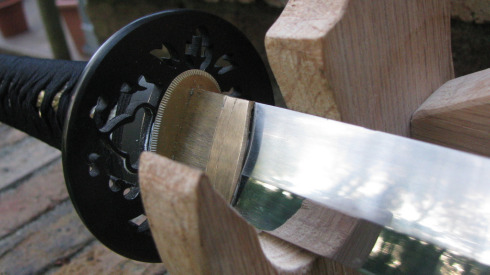
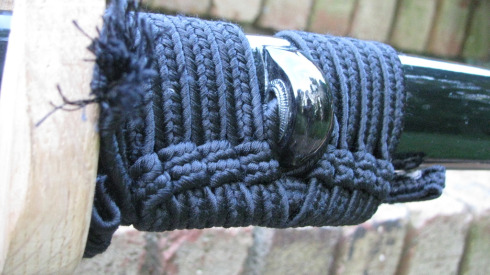
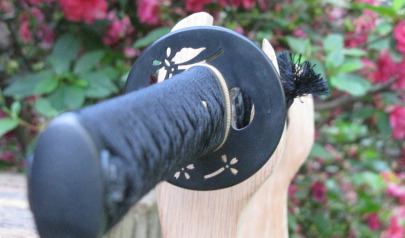
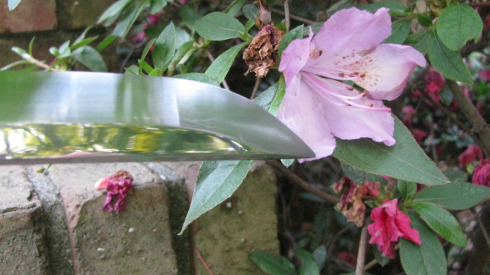
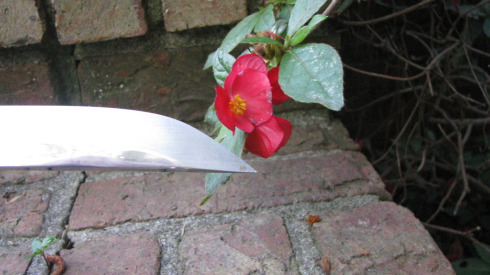
Handling Characteristics
There is no discernible difference in the handling between the two.
These katana handle very well. With the 5 inch POB they are very lively and responsive.
The waisted, well shaped tsuka makes for a great interface and the tight ito makes for a sure and tactile grip.
All in all these katana handle as well as any I've used with comparable cutting performance.
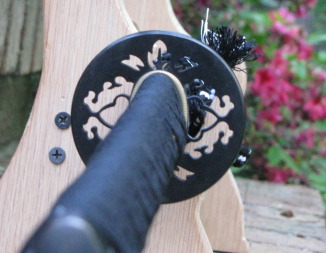
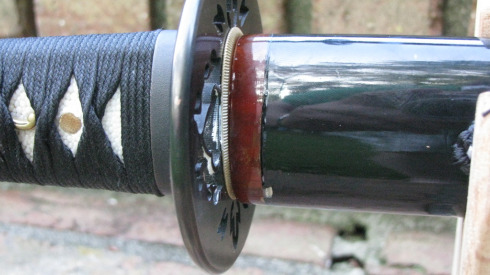
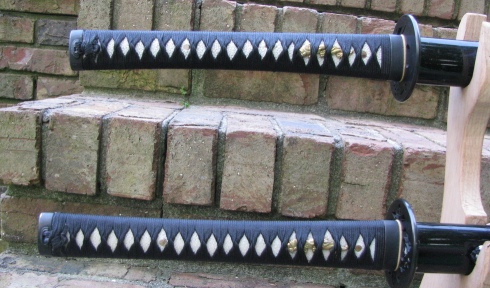
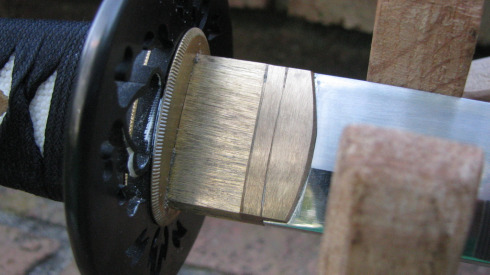
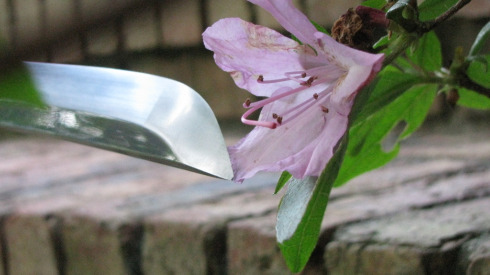
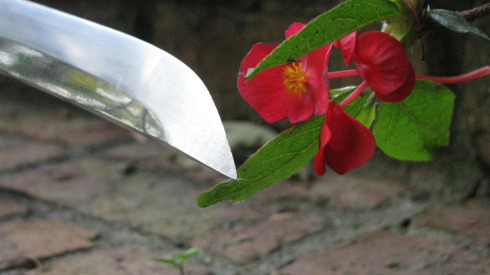
Cutting
Cutting is really the main purpose of these swords, and as such is really the main thrust (pardon the pun) of this review.
My son and I did LOTS of cutting. Heavy targets, light targets ... we cut 6 inch bamboo so hard the sword bounced off... we cut bottles and pool-noodles afterwards.
The swords cut very well, and no damage was sustained to the ha of the swords, even on some very hard old growth bamboo.
Enjoy.
VIDEO: Cutting Field Day
If Marc's 13 year old can cut bamboo and water bottles so easily with this sword, just imagine what YOU could do with it..!!
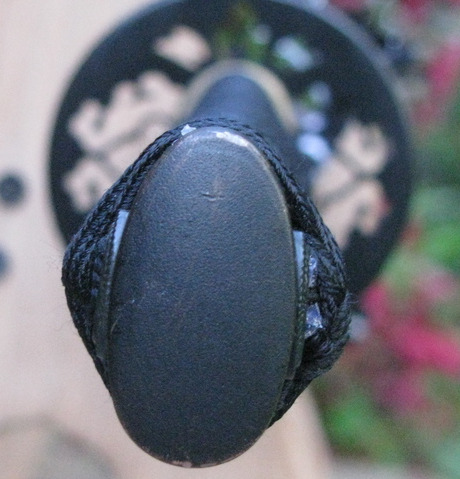
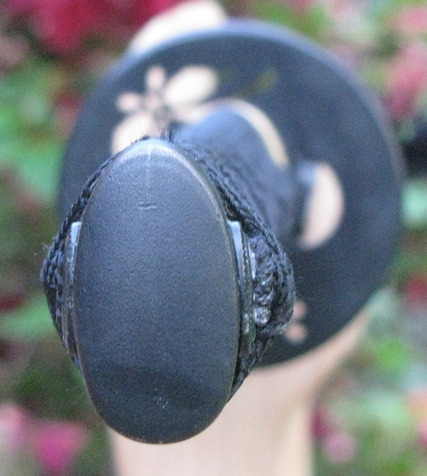
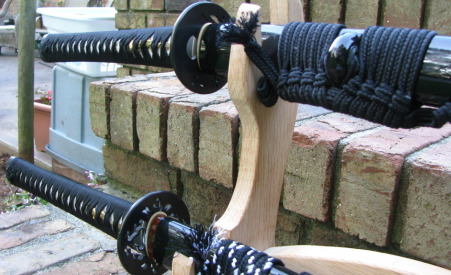
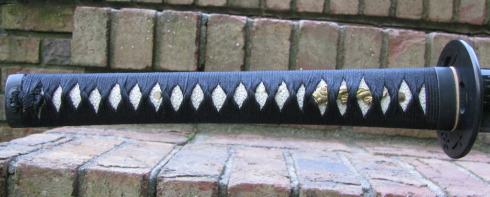
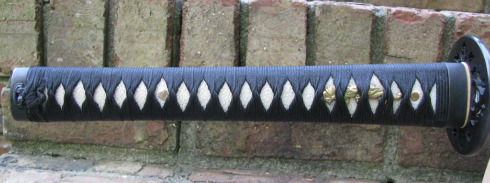
The Good, The Bad And The Ugly
This is my critical section where I trot out all the good things and the little imperfections about swords.
There are many good things to say about the Dojo Pro models. Decent polish, good balance, nice cutters, well wrapped, decent hardware, good tsuka shaping, lots of little details.
The bad: One of the saya had a lot of wax in it that continues to get all over the blade. One of the saya was a little loose, however this is easily fixed. The shinogi was a tad uneven on a very short section of blade #2.
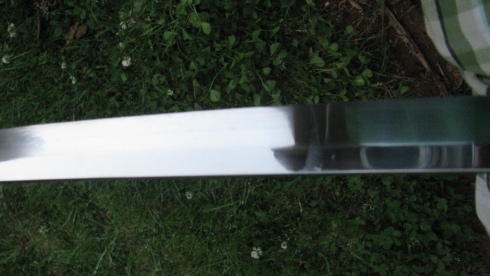
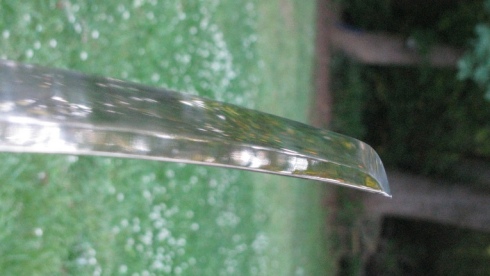
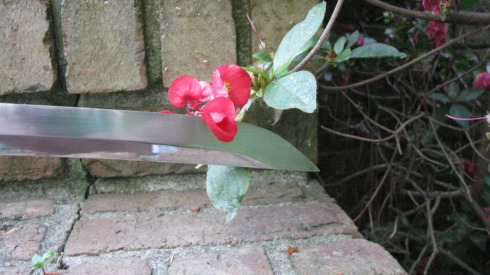
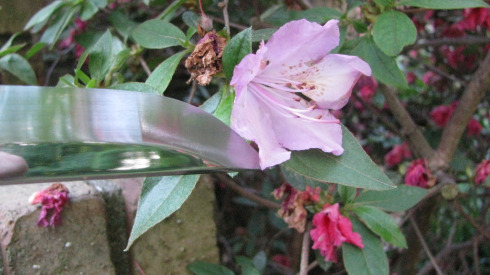
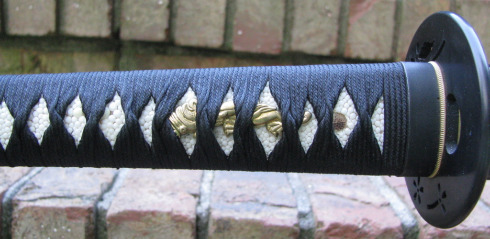
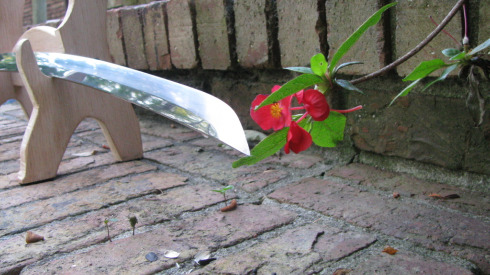
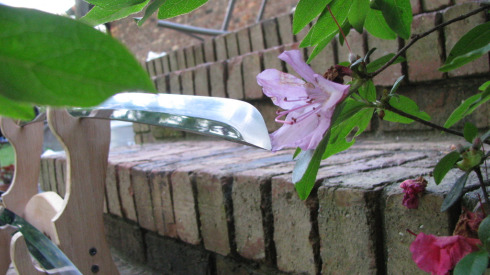
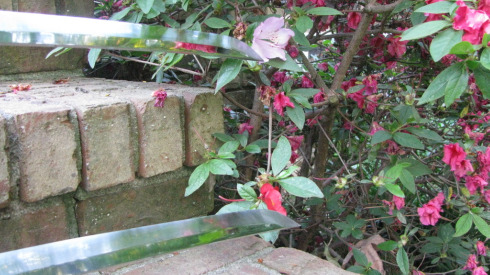
Conclusion
Both swords underwent several months of heavy use and moderate abuse. The swords were asked to perform cutting tasks beyond what they are designed for, and did so well.
Rock hard bamboo did no damage to the ha on either sword.
The #002 model did take a slight set on an arm sized piece of bamboo when a 13 year old made a bad cut...
The #005 model took a very slight burr in the kissaki tip from thrusting through plywood.
These damages are negligible, and inconsequential considering the use they were put to.
I conclude that in my opinion the Ronin Katana Dojo Pro models outclass most of their price-range competitors. Of all the sub $300 katana I have used... and that's many many many... only Hanwei and Dynasty Forge come close. Ronin Katana in my opinion edges out Hanwei by the tsuka shaping alone... and their only real competitor in the price range is the Dynasty Forge musha.
I highly recommended Ronin Katana Dojo Pro to anyone in the market for a tough, well built sub $300 katana with attention to many small details.
Thanks for reading.
PROS
- Nicely waisted, properly shaped tsuka (handle) for tactile and ergonomic grip
- Tight SILK ito and overall very well assembled
- Very durable, scratch resistant blades
- IRON tsuba, fuchi and Kashira (NO ALLOYS)
- Buffalo horn tipped saya, proper grooved habaki, traditional seppa - in short, no shortcuts!
- Some cosmetic minor uneveness of the shinogi (ridgeline)
- Saya of one of the blades has some waxy stuff in it
WHERE TO BUY
While you can buy direct from the Ronin Katana website, some of their policies are
quite harsh and customer service can be problematic to deal with. As
such we recommend you purchase them HERE at Kult of Athena
as they have faster shipping, kinder return policies, better customer
service and even prices can be lower depending on their in house QC
checks.
I hope this comparative review of these two Ronin Katana was helpful. Click here to return to A Beginners Guide to Authentic Japanese Swords from A Tale of Two Ronin: A Comparative Review



